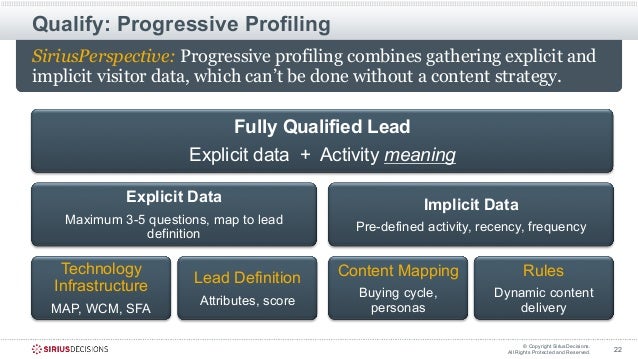
Every organization, every analyst, every company has a different definition for sales enablement. So, when we look at this in a little bit more of a big picture approach, let’s just talk about sales enablement because that’s all any of us are doing all day to day. Certainly your reps and your solutions engineers and folks like that, maybe your partners and resellers, but there’s a lot of other personas up here with the red Xs next to them who interact with your potential customers in a sales environment who are not enabled. Even if we’re being fairly generous, only about half of these personas are enabled by what we typically think about in terms of sales enablement. Here’s another way of looking at that information. Our data shows us actually that the typical B2B buyer interacts with nine different personas in the selling organization even before they become a customer. The folks who work for your organization, your channel partners, your VADs, your VARs, your resellers, your distributors. The first thing we discovered is that there’s a lot of people who can interact with your buyer. So let’s get started.Įvery year at SiriusDecisions, we do a very big survey called our B2B buyers study, and this year we found some really interesting things out when we asked B2B buyers how they buy, who they buy from, what makes them buy, and so on and so on and so on. This isn’t about redefining any of your titles, your organization’s, but we want to think about revenue enablement as a new way of conceiving about how we treat our customers through the lens of all customer-facing associates.

Now, mark my words, we want no one to change their title, no org charts, none of that stuff. Today, we’re going to introduce a little idea that SiriusDecisions has come up with called revenue enablement. And as providers, it’s the best way to guarantee, the most likely opportunity that we’ll get that upsell, that cross-sell or that renewal.īut a lot of our organizations don’t realize that, so we silo these customer-facing personnel and we lose traction as a result. But most of us tend to run these organizations in separate, distinct families because we are all tuned into decades and decades of industrialization principles that tell us that we need to run our departments accordingly.īut is that the best thing for the customer? Our customers? And even we as consumers know that a seamless experience from buyer to customer to advocate is the best way for us to have the best opportunity of getting the most out of what we’re spending on. We have folks in marketing, sales partners, solutions engineering, customer success. Most of our organizations are organized around silos when it comes to all the different types of people who work with our buyers and our customers. So to set the stage, let’s talk a little bit about our companies. And that’s the story behind sales enablement where we are today and this idea of revenue enablement where we believe things are moving tomorrow. Why am I telling you this story?īecause sometimes we set out to solve one particular problem, but we end up solving some others.



And then in 1951 an army recruit accidentally ingested some, and somehow it was in a weird way, discovered to be safe and effective for certain human conditions. About a century ago in the Midwest, there was a big problem with hemorrhaging issues in livestock, and so veterinary scientists came together and came up with what was then Warfarin to try to attack that problem.īut when it was first mass marketed, it wasn’t in a veterinary space. Most folks know it more commonly as Coumadin, but most people actually are not aware of the origin story of this drug. Peter Ostrow: Every day, millions of people around the world take the drug Warfarin to try to prevent and treat blood clots.


 0 kommentar(er)
0 kommentar(er)
